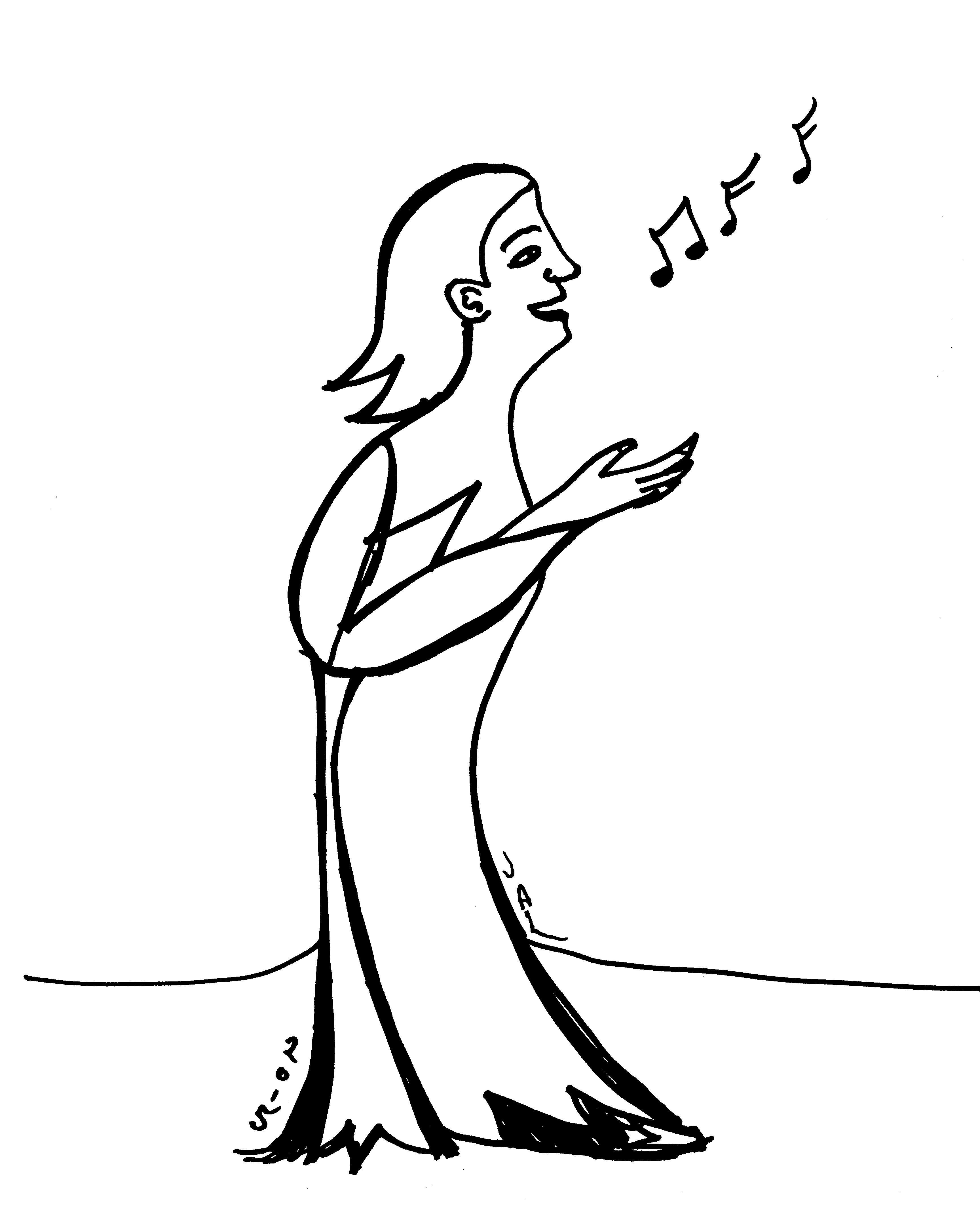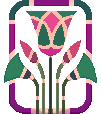
Tuesday, April 21, 2015
Intuitive Drawing: A Blossoming Talent
6:25am

Saturday, April 25, 2015
Happy Saturday and More Hathor Sightings
7:22pm

We discovered Red Rose, the Thai restaurant we've long been curious about, is neighbor to the shoe shop. The satay chicken appetizer intrigued me, as well as the pineapple fried rice. Julia got spicy scallops. While there, a friend came in, and we enjoyed good conversation, as well as meeting some of his friends. We'll visit this restaurant again!
Afterwards, we went to the library. I selected a couple of videos which sounded fascinating, and a small book on hieroglyphs. The book is geared more to young beginners, but the glyphs are sized large, and there are many photos of hieroglyph-rich pieces. One image that intrigued me is a bronze and wood mirror, the wooden handle having a Hathor head, and the bronze disk being engraved with Thoth and Ma'at.
When we got home, I did a search of all of the Brooklyn museum's pieces tagged "Hathor". Many lovely pieces there!
And now to the Hathor sightings!
The tracing is of a charming scene in which Tanefer receives a comforting and affectionate lick from Hathor in her form as a cow:
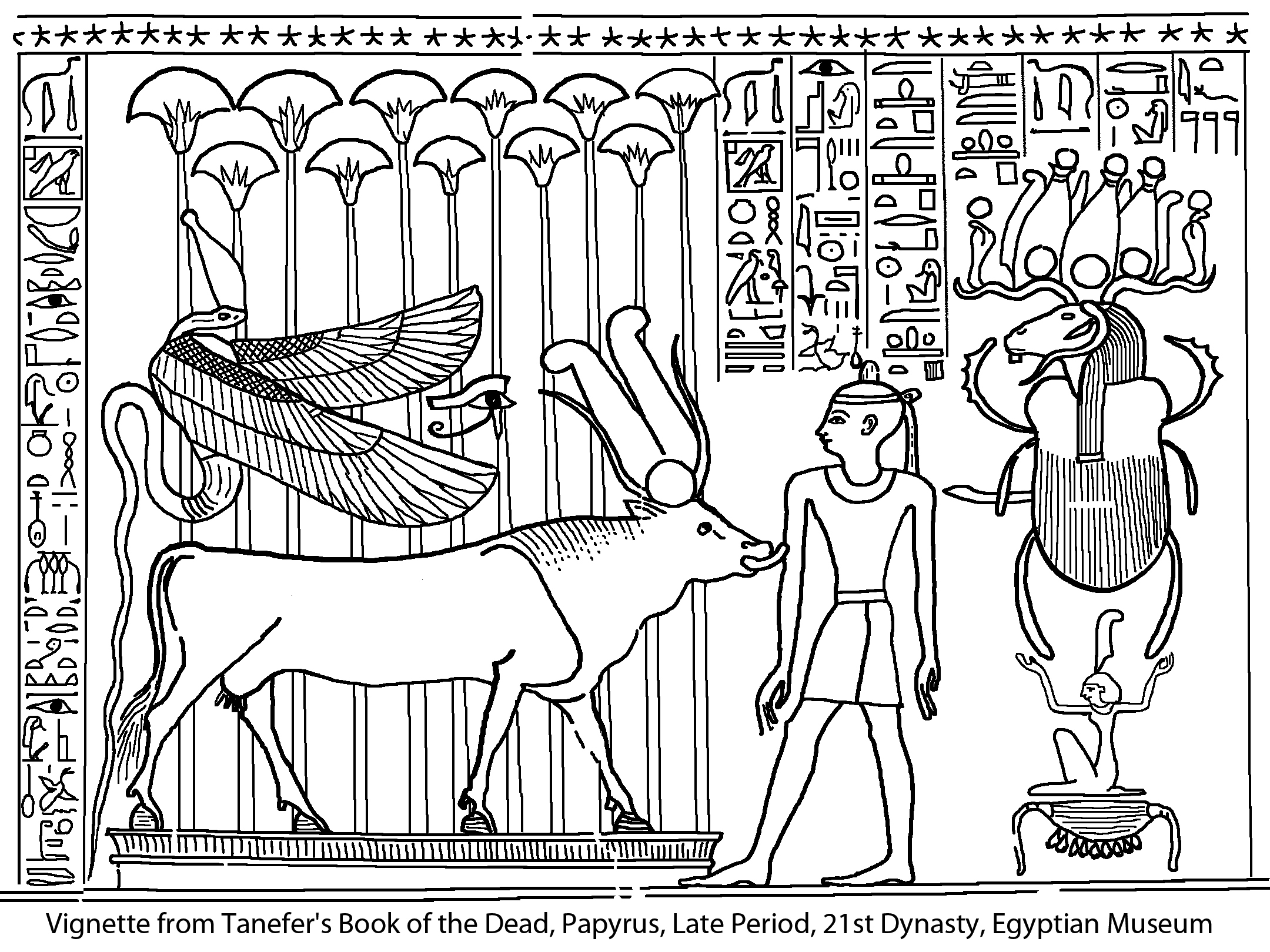
Vignette from Tanefer's Book of the Dead, Papyrus, Late Period, 21st Dynasty, Egyptian Museum, Cairo
My printable tracing was created from an enlargement of a Werner Forman Archive photo.
I wasn't able to learn much more about it, other than a snippet reference from a book partly authored by Werner Forman in 1962, in which I learned Tanefer was "the third prophet of Amon". Taking the search further, I learned from an 1895 book by Karl Baedeker that the "Gizeh museum" has a "Sarcophagus of Tanefer, with ten titles [], among which is that of 'steward of the herds in the domain of the sun-god', recalling the Homeric 'cattle of Helios'." Baedeker also refers to the "Sarcophagus of Ra-men-kheper, son of Tanefer, whom he succeeded as third prophet of Ammon." (page 123)
Notice, too, that Tanefer has a sash tied around his head, could this again be the tjetsen which assures safe passage through the underworld?
The other two Hathor sightings I share today come from my exploration of the Brooklyn museum website. The first one is a Vase of Pepy I, chosen because it demonstrates the kingly connection with Hathor began at least as far back as the 6th Dynasty:
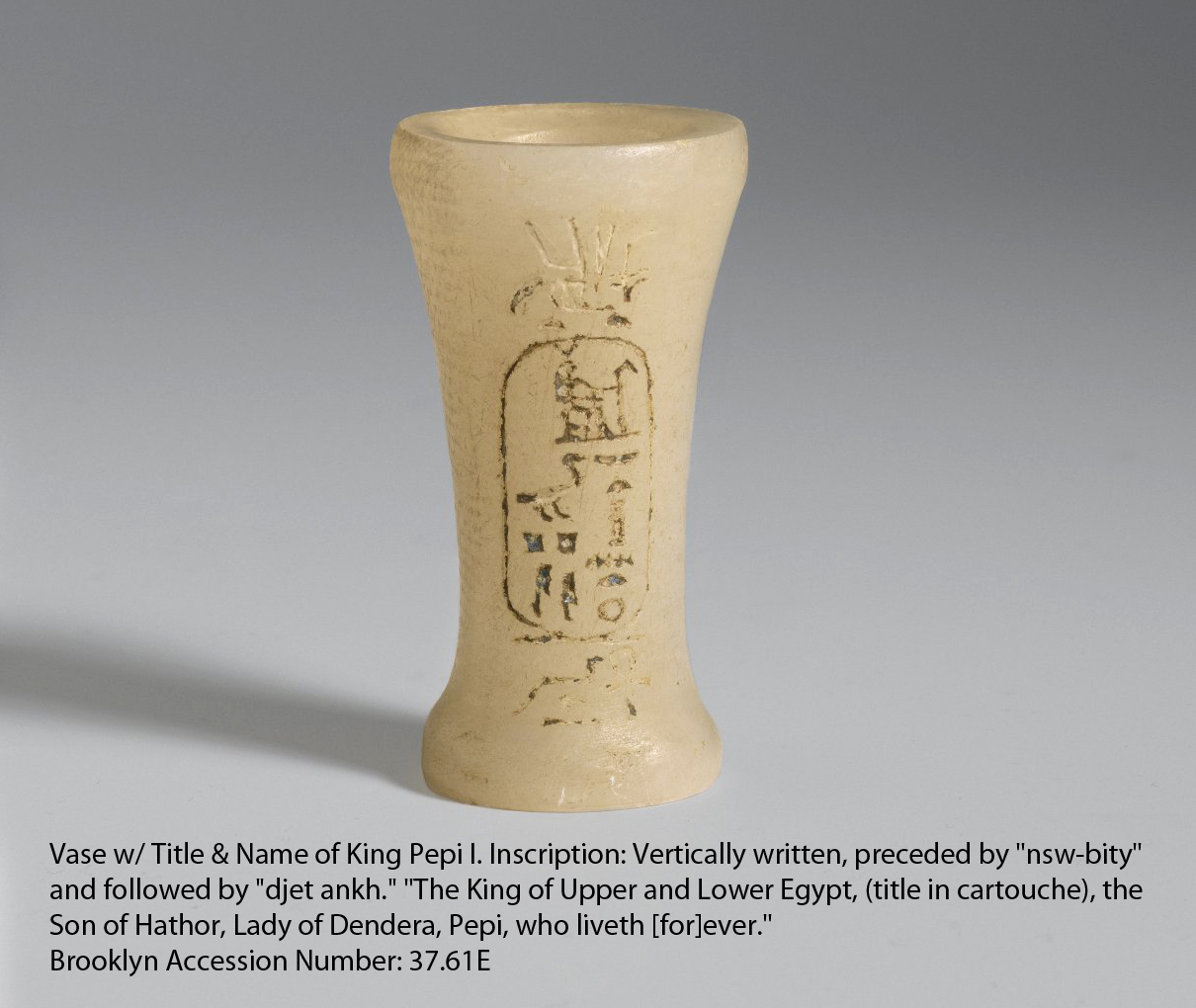
Vase of Pepy I
Egyptian alabaster, traces of fruit
Reportedly From: Saqqara, Egypt
Old Kingdom, VI Dynasty. ca. 2338-2298 B.C.E.
Dimensions: 2 1/8 x diam. 1 1/8 in. (5.4 x 2.8 cm)
Accession Number: 37.61E
Credit Line: Charles Edwin Wilbour Fund, (adapted from museum website photo)
"Catalogue Description: Vase Bearing Title and Name of King Pepi I. Inscription: Vertically written, preceded by "nsw-bity" and followed by "djet ankh." "The King of Upper and Lower Egypt, (title in cartouche), the Son of Hathor, Lady of Dendera, Pepi, who liveth [for]ever."
I can recognize the "son of Hathor" part, and the glyphs for "lady", nbt, often translated as "mistress", but couldn't make out the glyphs for "Dendera". Now that I look at it, I see the 'eye' glyph and the 'sun' or 'Ra' glyph. At first I wondered if "Eye of Ra" was part of the Dendera name. But the following is a more complete expression of "Dendera" or more nearly to what the ancients knew as "Iunet":

"Lady of Iunet"
So perhaps the vase features abbreviated glyphs to say "Lady of Dendera, Eye of Ra"? The two bottom glyphs are ambiguous. Lacking either center dot to suggest "Ra" or the "X" to suggest city, perhaps it's meant to say both? Same for the glyph above it. It is almost the bread-loaf "t", but there's a faint eye in it? Or am I seeing things that aren't there?
Meanwhile, "Already in the Fifth Dynasty private monuments recorded a cult of Hathor of Dendera" and "By the Sixth Dynasty there were many temples up and down the Nile dedicated to the cult of Hathor, several erected by Pepi I". (Barbara Lesko, _The Great Goddesses of Egypt_, page 93)
The other piece is a tiny electrum amulet, shared just because it's so cute:
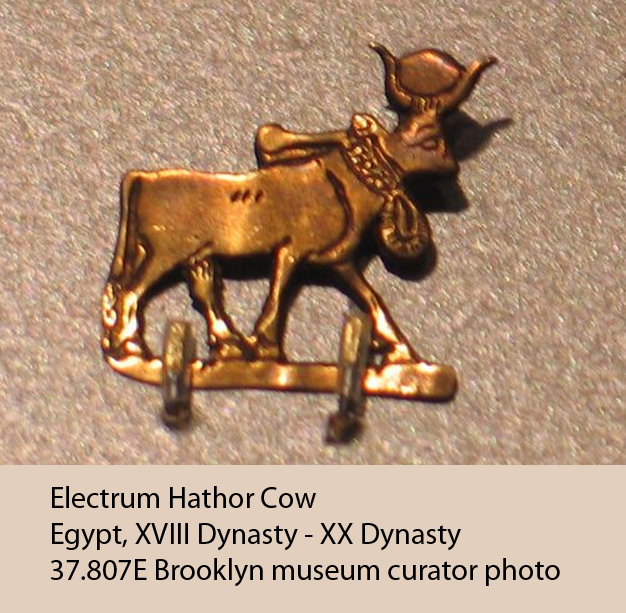
Hathor Cow
Electrum
New Kingdom, XVIII Dynasty - XX Dynasty, ca. 1539-1075 B.C.E.
Dimensions: 11/16 x 11/16 in. (1.8 x 1.8 cm)
Accession Number: 37.807E
Credit Line: Charles Edwin Wilbour Fund, (adapted from museum website photo)
